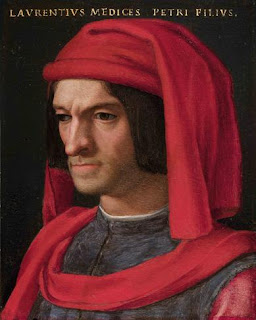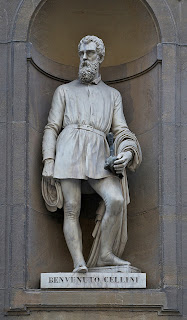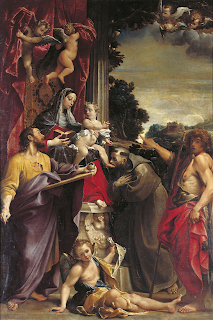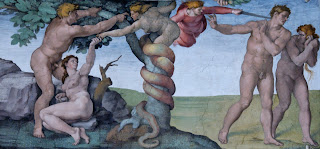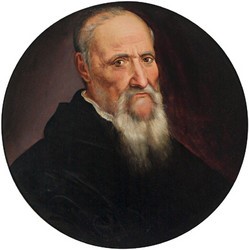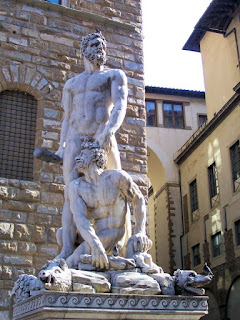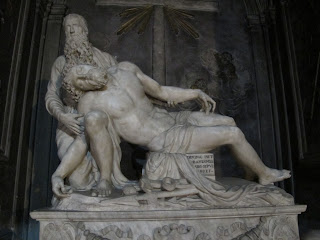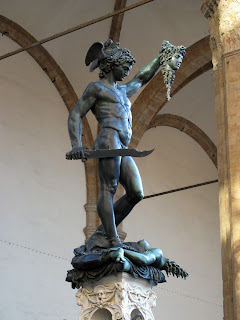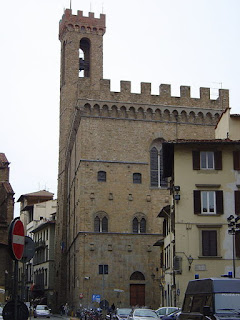Architect with multiple artistic talents
 |
| Leon Battista Alberti contributed to many aspects of Renaissance cultural development |
In his 68 years, Alberti became well known for his work on palaces and churches in Florence, Rimini and Mantua in particular, but he also made major contributions to the study of mathematics, astronomy, language and cryptography, wrote poetry in Latin and works of philosophy and was ordained as a priest.
He was one of those multi-talented figures of his era, along with Leonardo da Vinci, Michelangelo and, a little later, Galileo Galilei, for whom the description Renaissance Man was coined.
Alberti was born in Genoa in 1404, although his family were wealthy Florentine bankers. It just happened that at the time of his birth his father, Lorenzo, was in exile, having been expelled by the powerful Albizzi family. Leon and his brother, Carlo, were born out of wedlock, the product of their father’s relationship with a Bolognese widow, but as Lorenzo’s only offspring they were given a privileged upbringing.
Lorenzo would be allowed to return to Florence in 1428, by which time Leon - at the time known simply as Battista - had been educated in Padua, Venice and Bologna before taking holy orders in Rome.
| The facade of the church of Santa Maria Novella in Florence was designed by Alberti |
His first major architectural commission was for the facade of the Rucellai Palace in Florence in 1446, followed in 1450 by a commission to transform the Gothic church of San Francesco in Rimini into a memorial chapel, which became known as the Tempio Malatestiano.
In Florence, he famously designed the upper parts of the white marble facade for the Dominican church of Santa Maria Novella.
He is also credited with the Piazza Pio II, and its surrounding buildings, in the Tuscan village of Pienza, and both the church of San Sebastiano and the Basilica of Sant’Andrea in Mantua.
 |
| A page from Alberti's Della pittura shows his grasp of perspective and his ideas for how to use it in paintings |
In the field of philosophy, Alberti’s treatise Della famiglia established his reputation as an ethical thinker. He wrote the text in accessible language, rather than Latin. Based largely on the classical works of Cicero and Seneca, and addressed the day-to-day concerns of a bourgeois society, tackling such topics as the fickleness of fortune, meeting adversity and prosperity, husbandry, friendship and family, education and obligation to the common good.
Alberti’s important contribution to cryptography came with his invention of the first polyalphabetic cipher, which became known as the Alberti cipher, and his Cipher Disk, which consisted of two concentric disks, the outer one carrying capital letters and numbers, the inner one lower case letters, attached by a common pin.
Although clearly he made a scholarly contribution to the understanding of art, he produced very few paintings or sculptures in his own right. Giorgio Vasari, the artist whose Lives of the Most Excellent Painters, Sculptors, and Architects is considered the first history of art, described Alberti as an artist who “concentrated on writing rather than applied work”.
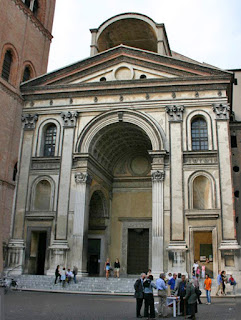 |
| The Basilica of Sant'Andrea in Mantua |
The Basilica of Sant'Andrea, which looms over the Piazza Mantegna in Mantua, is considered one of the major works of 15th-century Renaissance architecture in Northern Italy. Commissioned by Ludovico III Gonzaga, the church was begun in 1472 according to designs by Alberti on the site of a Benedictine monastery. Although it was 328 years before it was finished, with changes that altered Alberti's design, the church is still considered to be one of Alberti's most complete works.
 |
| The hill town of Pienza is a UNESCO World Heritage Site |
Pienza, a town in the province of Siena between Montepulciano and Montalcino, is described as the "touchstone of Renaissance urbanism." The whole of the centre was declared a UNESCO World Heritage Site in 1996. The trapezoidal Piazza Pio II is defined by four buildings, the Palazzo Piccolomini, the Duomo, the Palazzo Vescovile and the Palazzo Comunale.
More reading:
The unparalleled genius of Leonardo da Vinci
La Pietà - Michelangelo's masterpiece
Brunelleschi and the incredible dome of Florence's Duomo
Also on this day:
The Festa della Liberazione
1973: The death of World War One flying ace Ferruccio Ranza
Home
